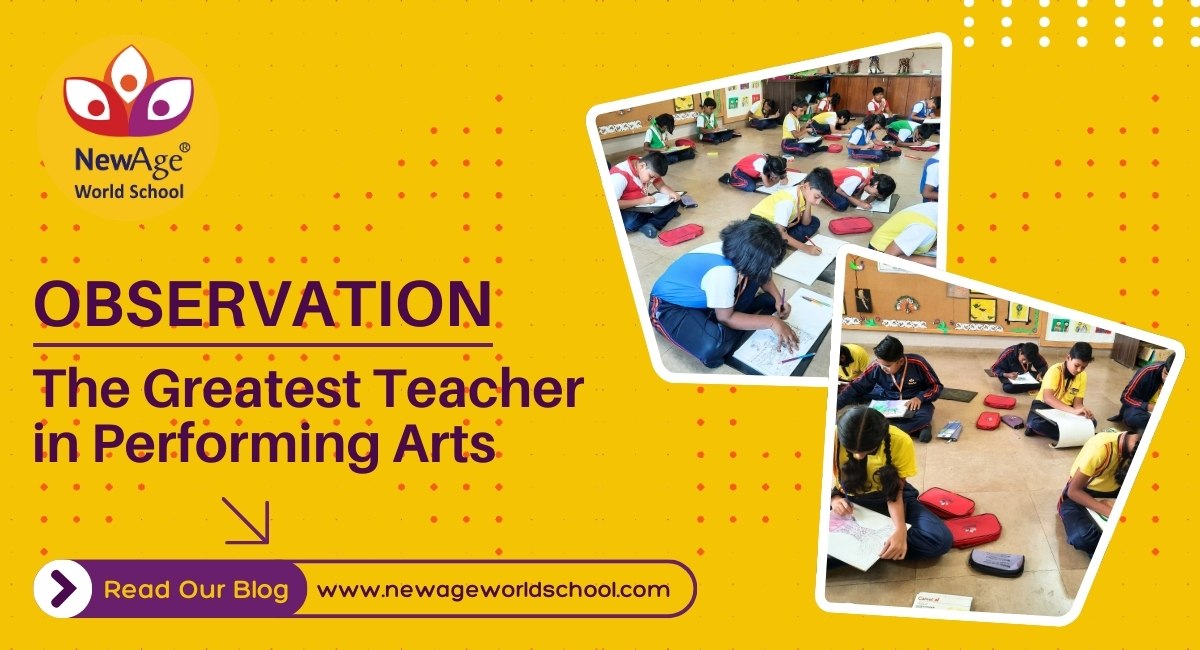

Introduction
Observation is the Greatest Teacher in Performing Arts
My Journey: Discovering Passion Through Observation
How Watching Live Performances Enhances Skills
From Watching to Mastery: The Role of Practice
Believe in Yourself & The World Will Believe in You
Conclusion
FAQs
They say, "Observation is the greatest teacher." And I completely agree. Learning does not always happen in a classroom, nor does it always require books and formal lessons. Many life lessons come from simply watching, understanding, and absorbing.
I promise you that by the end of this blog, you will see how learning through observation plays a huge role in performing arts learning. Whether you are a dancer, singer, actor, or musician, the ability to watch, analyze, and imitate is one of the most powerful tools for growth.
In this article, I will take you through my journey, explain the power of observation in learning, and show how watching live performances can improve your artistic skills.
As a child, I was always fascinated by music and dance. My parents often told me that I would immediately stop whatever I was doing whenever a song played. Even before I understood words, I could feel the rhythm, the beats, and the emotions behind the music.
Without realizing it, I was already learning through observation. Watching performers on television, local cultural events, and family gatherings taught me movements, expressions, and the essence of storytelling in dance and music. The more I watched, the more I understood how gestures and expressions could communicate emotions without words.
Later, as I started practising, I realized that my skills had improved significantly, even before receiving any formal training. This made me believe that the power of observation in learning is often underestimated. Watching great performers repeatedly can shape a person's understanding of performing arts learning better than any theory.
I grew up in a small town where cultural events were less frequent than in big cities. But whenever there was a festival or a performance, I would make sure I was there, sitting in the front row, completely absorbed in the magic of the stage.
One of the most memorable experiences of my life was watching the legendary singer Shri K J Yesudas perform live. I was in awe of how he controlled his voice, expressions, and deep connection with the audience. At that moment, I realized I didn't just love music—I had a passion for performing arts.
From that day on, my interest turned into an obsession. I started watching performances more seriously, not just for entertainment but to learn. I observed how singers used breath control, how dancers moved their hands and feet with grace, and how actors delivered their dialogues with emotions. I didn't need formal lessons yet—just learning through observation was helping me improve every day.
There is something special about watching a live performance. It's raw, real, and filled with emotions that no recorded video can capture. You get to see the little details—how an artist adjusts their posture, handles a mistake, and interacts with the audience.
The benefits of watching live performances go beyond just inspiration. They help in:
Watching live performances helped improve my rhythm, expressions, and even my confidence. It was a classroom without walls, where the best lessons were taught without a teacher.
At one point, I realized that watching alone was not enough. If I wanted to improve, I had to apply what I observed. That's when I started focusing on practice and performance improvement. I would watch a performance and then imitate the movements and expressions. I would record myself, compare it with what I had seen, and refine my style. The process was slow, but the results were incredible.
This made me realize that the best way to develop artistic skills is through a balance of watching and practising. How observation improves learning is simple—first, we absorb knowledge, then apply it, and finally, we improve through continuous practice.
I have learned from all the great artists I have observed that confidence plays a key role in learning about performing arts. If you hesitate or doubt yourself, the audience will sense it. But if you believe in your abilities, they will believe in you, too.
The journey from learning through observation to mastering an art form is long, but if you stay dedicated and keep practising, success will come your way.
My biggest lesson in my artistic journey is that observation is the greatest teacher. Every great artist has, at some point, learned by watching others. The way we learn performing arts effectively is not just by reading books or taking lessons but by watching, analyzing, and practising.
If you want to excel in dance, music, acting, or any other art form, I highly recommend observing the masters. Whether a live performance or a recorded one, make it a habit to study and analyze. The power of observation in learning can shape your artistic journey in ways you never imagined.
And remember—believe in yourself, and the world will believe in you!
Observation is a powerful tool, but mastery requires practice. Watching others can provide guidance, but consistent effort, rehearsal, and refinement are necessary to excel.
The best way to develop artistic skills is to observe great performers, practice regularly, seek constructive feedback, and continuously refine one's craft through repetition and experimentation.
The best way to learn performing arts effectively is through observation, practice, and self-evaluation. Watching skilled performers and applying learned techniques in regular practice sessions can bring improvement.
The benefits of watching live performances include improved understanding of expressions, stage presence, and audience interaction. It also provides inspiration and motivation to improve one's skills.
Observation helps learn performing arts by allowing individuals to study techniques, emotions, and expressions in real-time. It builds an understanding of stage presence, timing, and artistic delivery.
Leave a Reply
Your email address will not be published. Required fields are marked *
Comments
No comments available